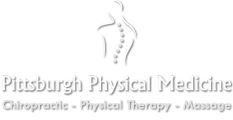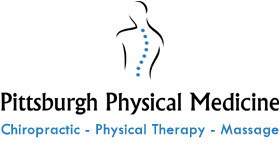Elbow Pain in Pittsburgh PA

Medial epicondylitis and lateral epicondylitis are two distinct conditions that affect different sides of the elbow and have unique causes and symptoms. Both can cause elbow pain in Pittsburgh PA, and understanding the differences between these conditions is crucial for accurate diagnosis and appropriate care. Let's explore each condition in more detail.
Medial vs. Lateral Epicondylitis
Medial Epicondylitis (Golfer's Elbow): Medial epicondylitis, commonly known as golfer's elbow, refers to inflammation and pain on the inner side of the elbow. It primarily affects the flexor tendons that attach to the medial epicondyle of the humerus bone. Despite its name, this condition can be caused by various activities that involve repetitive wrist and hand motions, not just golfing.
Causes: Medial epicondylitis is typically caused by repetitive stress on the forearm muscles, leading to tiny tears in the tendons. Activities such as golfing, throwing, chopping wood, and racket sports can contribute to the development of this condition.
Symptoms: Common symptoms of medial epicondylitis include pain and tenderness on the inner side of the elbow, weakened grip strength, discomfort when bending or flexing the wrist, and potential radiating pain into the forearm.
Lateral Epicondylitis (Tennis Elbow): Lateral epicondylitis, also known as tennis elbow, refers to inflammation and pain on the outer side of the elbow. It is typically associated with overuse of the extensor tendons in the forearm. Contrary to its name, lateral epicondylitis can be caused by activities other than tennis that involve repetitive gripping and wrist extension motions.
Causes: Lateral epicondylitis occurs due to repetitive stress and microscopic tears in the extensor tendons that attach to the lateral epicondyle of the humerus bone. Activities such as tennis, painting, typing, carpentry, and manual labor can contribute to the development of this condition.
Symptoms: The main symptoms of lateral epicondylitis include pain and tenderness on the outer side of the elbow, weakened grip strength, discomfort when lifting or gripping objects, and potential pain that radiates into the forearm.
How to correct elbow pain in Pittsburgh PA
While the underlying causes and affected tendons differ, the approaches for both conditions often overlap. Conservative options for both medial and lateral epicondylitis include rest, ice or heat therapy, pain medication, physical therapy exercises to strengthen the forearm muscles and improve flexibility, and the use of braces or splints to provide support and reduce strain on the affected area.
Chiropractors and physical therapists may also employ specific techniques to address these conditions. Chiropractic care may involve spinal adjustments to enhance nerve function and restore proper biomechanics, while soft tissue therapies like active release techniques (ART) and myofascial release can help reduce muscular tension and promote healing.
In conclusion, medial epicondylitis and lateral epicondylitis are distinct conditions affecting different sides of the elbow. Medial epicondylitis primarily affects the inner side of the elbow and involves the flexor tendons, while lateral epicondylitis affects the outer side and involves the extensor tendons. Accurate diagnosis and appropriate care, including chiropractic care and physical therapy, can help individuals recover from these conditions and regain their functionality.
Request An Appointment Today!
OFFICE HOURS
Monday
8:00am - 6:00pm
Tuesday
2:00pm - 6:00pm
Wednesday
8:00am - 6:00pm
Thursday
8:00am - 6:00pm
Friday
8:00am - 12:00pm
Saturday & Sunday
Closed
Pittsburgh Physical Medicine
5916 Penn Ave
Pittsburgh, PA 15206


